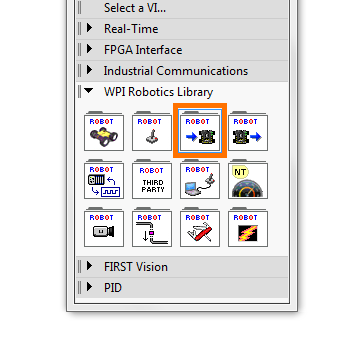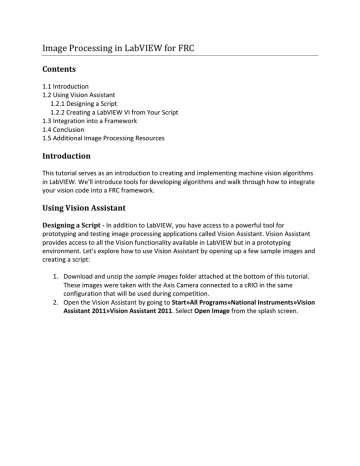

- #FIRST ROBOTICS LABVIEW TUTORIAL UPDATE#
- #FIRST ROBOTICS LABVIEW TUTORIAL SOFTWARE#
- #FIRST ROBOTICS LABVIEW TUTORIAL CODE#
The Starter Kit includes NI LabVIEW Robotics Module software that is also available separately. The functionality that the system provides is extensive. I am hoping to work with it a bit more and get past the usual tutorials but it is going to take awhile. I have had a chance to work with the kit for a little while but just enough to get a general feel for the robot's (Fig. It is programmed using NI's LabVIEW (see LabView 2010 Hits NI Week) and comes with a 180-day evaluation version of LabView. It is based on a Single Board RIO (SBRIO) system (see LabView 2010 and Single Board RIO) that is compatible with NI's CompactRIO.
#FIRST ROBOTICS LABVIEW TUTORIAL UPDATE#
If this tutorial inadvertently leaves some details out, please tell us about it and we will update it.National Instruments' (NI) $1999 NI LabVIEW Robot Starter Kit for Prototyping is a robotic hardware and software package.

In the initialize case, we configure the motor to be stopped, and for the next state to be Get Input For this example the Up, Down, Initialize, and Get Input have been entered.īack in Periodic Tasks, we use this Type Def to setup the state machine.Ī while loop is created for the main body, but some of the more cpu intensive maneuvers are taken care of before entering the loop in this example. Once the Type Def is open, we can set the items of the enum. Right click again and select “Open Type Def” To start, create a enum control on the front panel, and right click on it.
#FIRST ROBOTICS LABVIEW TUTORIAL CODE#
Just a formality, but below is the code used to initialize (open) the devices needed for this example.ĭue to the constructs of this data structure, it can be implemented in Periodic Tasks or in Teleop, for simplicity’s sake, and to prevent inadvertently causing lag to the drive motion of the robot, this example will show implementation in Periodic Tasks, although it could be done in Teleop. The objective is for a button press to signal the motor to go up until the top limit switch is pressed, then go back down to the bottom limit switch this will happen un altered unless either a button to go down is pressed sending the actuator down immediately or the up button is pressed again (in which case the sequence is restarted).

The following example implements a state machine for a device that utilizes limit switches wired into the DI\O ports of the RoboRIO. A good architecture for this is the State Machine (NI documentation here). When programming a robot, or programming in general, it is often convenient to specify a sequence of steps, but sometimes the program must be able to exit that sequence or start another when instructed to. FRC LabVIEW Tutorials - State Machine Using a State Machine For Sequences of Actions


 0 kommentar(er)
0 kommentar(er)
